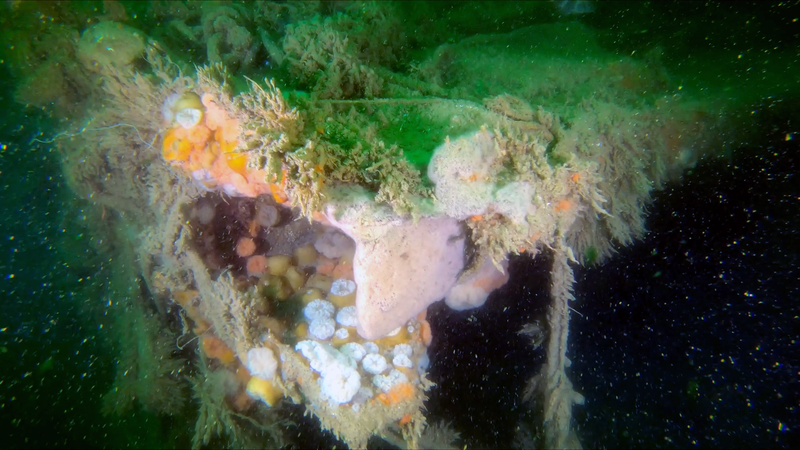A World War II Shipwreck Is Spewing Toxic Waste

Torn deck plating from the shipwreck.
A team of researchers studying an 80-year-old shipwreck in the North Sea have found that the ship, which was sunk by a bomb during World War II, is leaking hazardous pollutants onto the ocean floor.
The ship was the V-1302 John Mahn, a German fishing trawler that the Nazis used as a patrol boat. The British Royal Air Force bombed and sunk the vessel in 1942. According to a recent study, the wreck that has spent the better part of a century on the seafloor is leaking toxic pollutants into the water.
Read more
Asus Made a Kitchen Gadget That Tells You When Fruits and Veggies Are Actually Clean
I Drank Dying Glacier Water, and All I Got Was a Deeper Feeling of Dread
The research team in Belgium recently took samples from the steel hull and the sediments surrounding the wreck and found that heavy metals and explosives have leaked out. Their research is published in Frontiers in Marine Science.
“While wrecks can function as artificial reefs and have tremendous human story-telling value, we should not forget that they can be dangerous, human-made objects which were unintentionally introduced into a natural environment,” said Josefien Van Landuyt, a microbial ecologist at Ghent University and the study’s lead author, in a Frontiers release.
The team found nickel and copper in the samples, as well as polycyclic aromatic hydrocarbons—chemicals that naturally occur in crude oil and gasoline. They also found arsenic and explosive compounds, further indications that the materials that went down with the V-1302 John Mahn have leached into the water since its sinking.
Previous research indicated that shipwrecks from World Wars I and II may contain up to 20 million metric tons of petroleum products—an extraordinary amount of pollutant material being wasted into the sea over time. Besides that, as much as 1.6 million metric tons of ammunition were sunk or dumped in the waters surrounding Europe after World War II.
Pollutants have been found on the sites of other World War II shipwrecks, indicating that the V-1302 John Mahn exemplifies a bigger problem. Van Landuyt added that, as the wrecks age, their corrosion opens up more holes in the ship, potentially worsening their environmental impacts.
There are thousands of wrecks on the bottom of the North Sea alone, many of which carried materials that can have damaging impacts on marine life. But the ships themselves are also at risk, primarily by illegal salvaging. (In one case, salvagers who tore apart several Japanese wrecks claimed the operation was to clean up toxic materials.)
Protecting archaeological heritage is important, but so is reducing the amount of toxic materials that leak out of the wars’ shipwrecks. The recent study indicates that just because something like a shipwreck appears inert, on a microscopic level it’s still having worrying impacts on the environment around it.
More: 375-Year-Old Shipwreck Found at Bottom of German River

